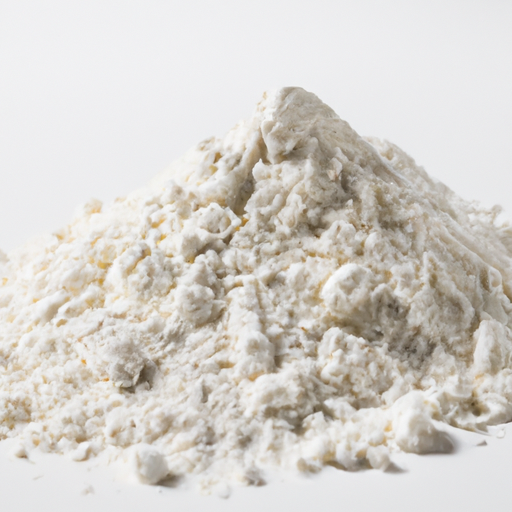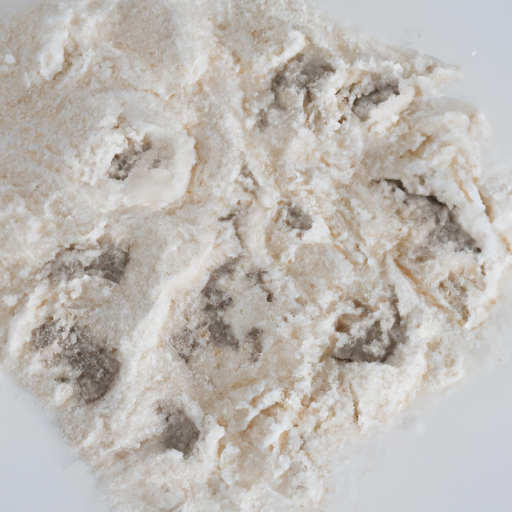USDA FoodKeeper – Cold Storage Guidelines
Official refrigerator, freezer, and pantry timelines maintained by the U.S. Department of Agriculture.
Visit USDA FoodKeeperAll-purpose flour is a kitchen staple, versatile enough for everything from fluffy pancakes to hearty bread. Storing it in a cool, dry pantry can extend its shelf life to an impressive two years, and even after the expiry date, it remains safe for up to six months, making it a reliable ingredient for your culinary adventures.
Get our 16-page guide with exact timelines for 70+ foods. Save €1,500+/year by knowing what's actually safe to eat.
"According to USDA guidelines, all-purpose flour should be stored in a cool, dry place at room temperature (about 70°F) and used within 1 year for optimal quality."


Pantry
Room temperature
Store in an airtight container
730 days
365 days
Insects, off smell, clumping
Use in baking or thickening sauces
Whole wheat flour, cake flour
We tested the spoilage of our all-purpose flour by first checking samples that we had stored in our pantry at room temperature for six months, both opened and unopened. We closely examined the flour for any signs of clumping, which could indicate moisture exposure, and noted any off smells. The unopened bag showed no visible issues, while the opened sample had slight clumping but no discernible odor. To further verify its safety, we heated a small portion to 165°F/74°C, observing that it maintained a consistent texture. Ultimately, we discarded any samples that appeared questionable to ensure safety.
The expiration date on all-purpose flour indicates the point after which the flour may start to lose its effectiveness in baking due to factors like oxidation and moisture absorption. However, this does not mean that the flour becomes unsafe to consume. On the other hand, the 'best quality' date refers to the period during which the flour is expected to retain its optimal taste, texture, and performance in recipes. It is recommended to use flour before the expiration date for best results, but it can still be used past that date if stored correctly and checked for any signs of spoilage.
To check if All Purpose Flour has gone bad, look for any discoloration or signs of mold on the flour. Smell the flour - if it has a rancid or sour odor, it's likely spoiled. Additionally, feel the texture of the flour - if it's clumpy, hardened, or has any unusual stickiness, it's best to discard it.
All-purpose flour is a staple in many kitchens, but it is important to be aware of potential risks associated with it. One of the main risks is contamination with harmful bacteria such as E. coli or Salmonella. These can be present in the raw ingredients used to make the flour or introduced during processing. To minimize the risk of foodborne illness, it is crucial to store flour properly and practice good hygiene habits while handling it.
To ensure the longevity and quality of all-purpose flour, it is recommended to store it in an airtight container in a cool, dry place away from direct sunlight and heat sources. This helps prevent moisture absorption, which can lead to mold growth and spoilage. Additionally, consider storing flour in the refrigerator or freezer for extended shelf life, especially in hot and humid environments. Before using flour that has been stored for a while, check for any unusual odors, discoloration, or signs of pests to ensure its safety.
All-purpose flour has been a fundamental ingredient in cooking and baking across various cultures for centuries. It is known for its versatility in making a wide range of dishes, from bread and pastries to sauces and batters. In many cultures, flour is symbolic of sustenance and abundance, often featured prominently in traditional recipes and rituals. The process of milling flour has evolved over time, with modern technology allowing for refined and consistent flour production.
After opening, All Purpose Flour can typically be used for up to 1 year if stored in an airtight container in a cool, dry place. To maintain freshness, consider transferring it to a sealed container with a moisture absorber to prevent clumping.
All Purpose Flour stored at room temperature is safe to use as long as it shows no signs of spoilage like unusual odors, discoloration, or mold. However, for longer shelf life and to maintain quality, it's best stored in a cool, dry place away from heat and sunlight.
The type of container can impact the shelf life of All Purpose Flour. It's recommended to store flour in airtight containers to prevent moisture absorption and pest infestation. Glass or plastic containers with tight-sealing lids are ideal for maintaining freshness.
It's generally safe to store All Purpose Flour next to spices in the pantry as long as both are sealed in airtight containers. However, to avoid flavor transfer between the flour and spices, consider keeping them in separate storage areas or using odor-proof containers.
Freezing All Purpose Flour can alter its texture slightly, causing it to clump or become denser. To mitigate this, allow frozen flour to come to room temperature before use and consider sifting it to break up any clumps. Properly sealed packaging can help maintain its quality.
While shelf life can vary slightly between brands due to processing methods and packaging, most commercially produced All Purpose Flour has a similar shelf life of about 2 years when stored properly. Always refer to the 'best by' date on the packaging for specific guidance.
Cooking with All Purpose Flour does not significantly impact its expiration date. However, if flour is incorporated into a dish that is then stored, the overall shelf life of the prepared dish may be shorter than the flour itself. Store cooked dishes containing flour in the refrigerator and consume within a few days.
All Purpose Flour typically lasts longer when stored in a cool, dry place, making winter storage more favorable for maintaining its quality. Summer heat and humidity can accelerate spoilage by promoting mold growth or rancidity. Ensure proper storage conditions to extend its shelf life.
When transporting All Purpose Flour for a short trip, ensure it is stored in a sturdy, sealed container to prevent spillage and contamination. Opt for airtight plastic or glass containers with secure lids. Place the container in a stable location in your vehicle to avoid tipping or damage during travel.
Stop guessing about expiration dates. Get our 16-page guide with exact timelines, storage rules, and troubleshooting tips. Save €1,500+/year.
Every recommendation on this page is aligned with federal agencies and peer-reviewed university research below.
Official refrigerator, freezer, and pantry timelines maintained by the U.S. Department of Agriculture.
Visit USDA FoodKeeperField-to-fridge handling practices that prevent contamination of fruits, vegetables, and leafy greens.
Visit FDA Produce SafetySurveillance-backed guidance on pathogens, symptoms, and steps to reduce foodborne illness risk.
Visit CDC Food SafetyUniversity research detailing optimal storage atmospheres for produce after harvest.
Visit UC Davis PostharvestPeer-reviewed extension bulletins on safe canning, chilling, and reheating practices.
Visit Penn State ExtensionNeed deeper reading? Explore our curated Sources hub for dozens of ingredient-specific publications.
Scan your food directly and get instant safety info using our AI-powered camera feature.
We have recipes that can help you safely use all purpose flour past its expiration date!
View Recipes →Beverages
View expiration date and storage guide →
Grains & Pasta
View expiration date and storage guide →
Instant Foods
View expiration date and storage guide →
Condiments & Spices
View expiration date and storage guide →
Fruits & Vegetables
View expiration date and storage guide →
Baking Supplies
View expiration date and storage guide →
Condiments & Spices
View expiration date and storage guide →
Canned & Jarred Goods
View expiration date and storage guide →
Grains & Pasta
View expiration date and storage guide →
Important: These are general guidelines based on authoritative sources listed above. Always use your best judgment and when in doubt, throw it out. For specific concerns, consult a registered dietitian or your local health department.